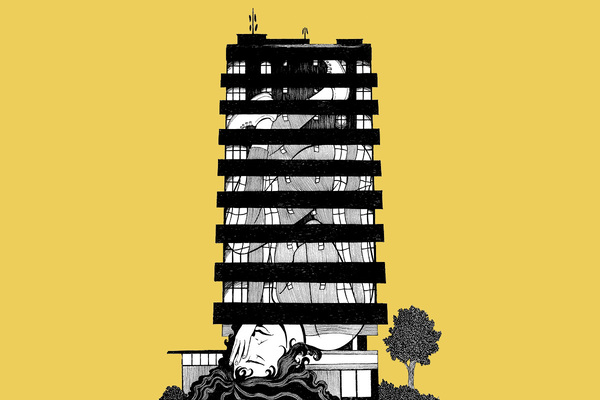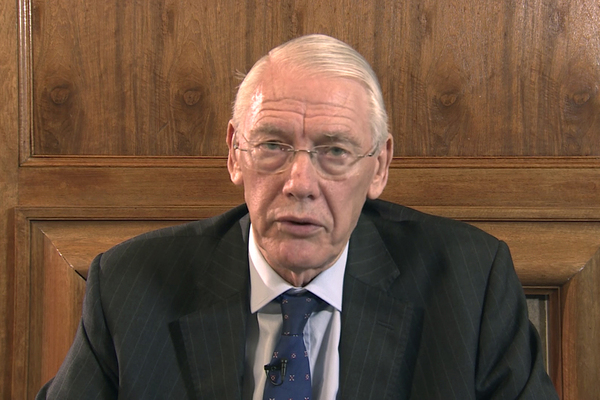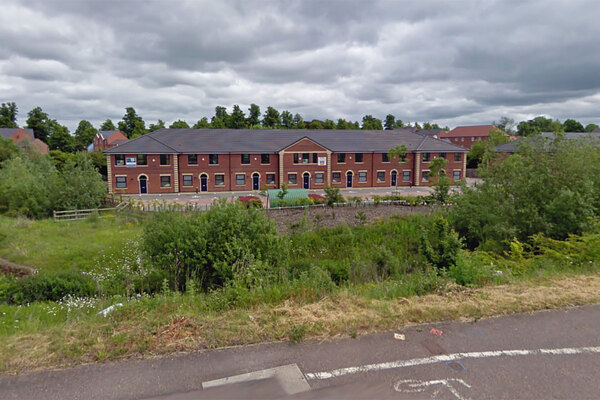Timeline: the three years since Grenfell
This Sunday is the third anniversary of the Grenfell Tower fire, in which 72 people lost their lives. Peter Apps charts the key events that have taken place since
14 June 2017: Elpidio Bonifacio, the last resident to leave Grenfell Tower alive, exits the building at 8.07am. Fires continue to burn in the building for the next 36 hours, while survivors gather in hastily established ‘rest centres’ and community buildings such as local churches, mosques and pubs.
A lack of co-ordination leads to days of uncertainty over the whereabouts of survivors, and people are forced to hunt hospitals for their relatives. The provision of relief and accommodation is chaotic. Some residents of the estate surrounding the tower are forced to sleep rough.
15 June 2017: Theresa May, prime minister at the time, announces a public inquiry into the fire, saying: “Right now people want answers and it’s absolutely right and that’s why I am today ordering a full public inquiry into this disaster. We need to know what happened.”
16 June 2017: The government orders social landlords to carry out an audit of their tower blocks – reporting on how many they own and details of any refurbishments. It is confirmed that aluminium composite material (ACM) cladding was used on Grenfell Tower.
17 June 2017: At a behind-closed-doors meeting at what was then the Department for Communities and Local Government, it is agreed that polyethylene-cored ACM cladding, the kind used on Grenfell, does not comply with Approved Document B – the official guide to building regulations. This claim is repeated by chancellor Philip Hammond the next day.
19 June 2017: The government orders social landlords to send in samples of ACM cladding on their tower blocks for testing. The first ACM panels are identified on towers in Barnet the next day.
Former prime minister Theresa May with firefighters in the aftermath of the Grenfell fire (picture: Alamy)
22 June 2017: After Theresa May apologises for a “failure of the state, local and national” in responding to the fire, Nicholas Holgate, chief executive of the Royal Borough of Kensington and Chelsea, resigns. Camden Council reveals that it is urgently stripping cladding from five towers on the borough’s Chalcots Estate. A day later it is revealed that cladding from 11 tower blocks have so far failed tests.
25 June 2017: Sixty towers from 25 local authority areas have now failed tests, accounting for 100% of the samples tested as the scale of the building safety crisis begins to become clear. A day later, the government convenes an independent expert panel to advise on fire safety, chaired by Sir Ken Knight.
28 June 2017: With 120 cladding samples having failed tests, the National Housing Federation calls for a halt to the testing programme and a move to work to remediate the buildings.
30 June 2017: Robert Black, chief executive of Kensington and Chelsea Tenant Management Organisation (KCTMO), steps down, as does Nicholas Paget-Brown, then-leader of the Royal Borough of Kensington and Chelsea.
6 July 2017: The government announces a programme of large-scale testing of cladding systems to assess their safety.
20 July 2017: After Sajid Javid tells the House of Commons that no councils have yet asked for financial support for fire safety measures, Inside Housing identifies six that had in fact written to government requesting assistance. Mr Javid says he was not aware of them when he made his statement.
28 July 2017: The government announces an independent review of fire safety in high-rise buildings chaired by Dame Judith Hackitt and the first large-scale test result is revealed – a mock-up of the system used on Grenfell, which failed in seven minutes.
15 August 2017: Sir Martin Moore-Bick (above), the retired judge appointed to chair the Grenfell Tower Inquiry, sets out his terms of reference and promises an interim report on the causes of the fire by Easter 2018.
29 August 2017: It is revealed that KCTMO will be stripped of the management of council homes in Kensington and Chelsea.
1 September 2017: The ACM testing programme concludes, and only three combinations of ACM and insulation pass. The government confirms that all failed systems will need to be stripped from high rises and promises to commission testing on non-ACM cladding materials.
6 September 2017: Sajid Javid, communities secretary at the time, reveals that out of 89 privately owned buildings that have had their cladding tested, 85 have failed tests.
13 September 2017: A letter leaked to Inside Housing reveals that the government has been refusing to fund work to install sprinklers in tower blocks, branding the work “additional, not essential”.
14 September 2017: At an opening session of the inquiry, Sir Martin reveals that the Grenfell Tower Inquiry will be split into two stages.
19 September 2017: Mr Javid announces that the government will publish a “wide-ranging” Social Housing Green Paper, aimed at reforming the sector to make it more accountable to residents.
13 October 2017: In one of the first assessments of the cost of fire safety work, it is estimated that post-Grenfell works will cost councils £402m.
4 December 2017: Mr Javid tells private building owners not to pass on costs to leaseholders and announces increased funding for the Leasehold Advisory Service.
12 December 2017: Ahead of the six-month anniversary, three survivors give an address in the House of Commons, the first public appearance by representatives of Grenfell United. More than 100 Grenfell survivors are still in temporary accommodation.
18 December 2017: Dame Judith Hackitt unveils the conclusion of her interim report, describing the system of building regulation as “not fit for purpose”.
19 December 2017: The first statistical release on dangerous cladding shows that 284 tower blocks have been identified. It says 26 have had cladding removed and only one has completed replacement.
22 December 2017: Ms May rejects a request by survivors to have additional panel members to assist Sir Martin at the Grenfell Tower Inquiry.
10 January 2018: A mortgage lender refuses to lend on a building in Southend because of fire safety issues – the first evidence of what will become a huge crisis for the sector.
18 January 2018: As leaseholders of Citiscape in Croydon are told they face a £2m bill for cladding removal works, warnings are issued that tens of thousands of other residents across the country will be in the same position.
20 February 2018: With only three of 299 blocks with Grenfell-style cladding to have completed remediation work, Ms May faces serious questions about the government’s lack of action in the House of Commons. A day later, rapper Stormzy attacks her response to Grenfell at the Brit Awards.
23 February 2018: The government reveals that it plans to alter building guidance to formally include the use of ‘desktop studies’. The move sparks criticism from groups calling for an outright ban on combustible cladding.
15 March 2018: The Metropolitan Police reveals that fire doors at Grenfell Tower failed to provide adequate resistance, permitting fire through after 15 minutes rather than the required 30.
16 April 2018: A leaked report prepared by the Building Research Establishment hammers the refurbishment of Grenfell Tower, including windows stuffed with combustible material and ineffective fire barriers as well as the dangerous cladding.
11 May 2018: Ms May U-turns on her refusal to allow extra panel members at the Grenfell Tower Inquiry, announcing that two extra panel members will be added for the second phase of the inquiry.
11 May 2018: Inside Housing reveals that the Hackitt Review will not recommend a ban on dangerous cladding or desktop studies, despite huge pressure from expert groups, survivors and MPs to do so.
16 May 2018: Under mounting pressure from survivors for tougher action, Ms May announces £400m to directly fund the removal of dangerous cladding for the social housing sector only. Removal work has completed on just seven buildings, with 317 identified.
17 May 2018: The Hackitt Review is published, recommending against an outright ban on dangerous cladding. After survivors say they are “saddened and disappointed” by this omission, the government immediately U-turns, launching a consultation on a ban. The rest of the report recommends an overhaul of the regulation of tall buildings.
21 May 2018: As phase one of the Grenfell Tower Inquiry opens, residents share emotional tributes to the victims of the fire.
Picture: Shutterstock
14 June 2018: Thousands join a march in Kensington to mark the one-year anniversary of the fire (above).
26 June 2018: The first incident commander Michael Dowden is left emotional after tough questioning at the Grenfell Tower Inquiry.
3 July 2018: Leaseholders in a block in Manchester lose a tribunal and are ordered to pay £3m for the replacement of dangerous cladding.
14 August 2018: The Social Housing Green Paper is published, but its proposals are widely condemned as too limited.
27 September 2018: Giving evidence to the inquiry, Dany Cotton, then-commissioner of the London Fire Brigade, sparks anger by saying she would change nothing about the fire service’s response and drawing an analogy with a space shuttle landing on the Shard.
3 October 2018: The government goes ahead with its cladding ban, but limits its impact to tall buildings only – despite calls for it to apply to other properties such as care homes.
6 November 2018: Warranty provider the National House Building Council, which also signs buildings off as compliant on construction, announces that it will pay out for remediation on a number of affected buildings.
28 November 2018: Research estimates that a further 1,600 buildings have dangerous cladding materials on their walls.
1 December 2018: The government publishes Advice Note 14, requiring building owners to confirm that there are no combustible materials on the walls of their properties, or to carry out a large-scale test showing that the materials they use comply.
7 December 2018: New powers giving councils the ability to force the removal of dangerous cladding from private buildings are criticised as they contain no provision to prevent leaseholders from being forced to pay.
High-pressure laminate cladding before and after being tested for fire safety
11 December 2018: As the first phase of the Grenfell Tower Inquiry concludes, Sir Martin reveals that the second phase may not begin until early 2020.
14 December 2018: As the 18-month anniversary of the fire arrives, there are calls for deadlines to be put on rehousing, with 54 families still without a permanent home.
10 January 2019: Figures show the remediation of buildings with Grenfell-style cladding stalling. Just 67 completions out of 437 identified towers have happened.
14 February 2019: Almost 18 months on from announcing plans to test a range of cladding materials, the government announces the materials it will test and says the programme will begin in March.
26 April 2019: With private leaseholders facing huge bills for remediation, Inside Housing and several groups of leaseholders launch the End Our Cladding Scandal campaign.
9 May 2019: As an open letter is published calling for government action to fund cladding removal in the private sector, the government gives in to pressure and announces a £200m fund to pay for it.
7 June 2019: Police announce that they have carried out 13 interviews under caution in relation to Grenfell.
10 June 2019: A huge fire rips through timber cladding at Samuel Garside House in Barking. It later emerges that ‘Class D’ rated timber cladding had been used and that a fire risk assessment had warned of the issues.
13 June 2019: Ahead of the second anniversary, Inside Housing publishes letters sent pre-Grenfell to a series of housing ministers – including Gavin Barwell, at the time chief of staff to the prime minister – urging the government to toughen regulations on fire safety to protect those living in high rises.
21 June 2019: Inside Housing research shows that there are still tens of thousands of non-compliant fire doors in use in social housing around the country that are yet to be replaced.
24 June 2019: Despite previously ignoring warnings that guidance did not cover balconies, the government publishes an advice note telling building owners to remove any combustible materials from them. It declines to offer funding.
26 July 2019: A high-pressure laminate cladding system passes the official test under the government programme – but the test is criticised for using materials that are far less combustible than those on real-world buildings. The government advises the removal of any combinations that are more combustible.
9 August 2019: A timber-framed care home in Crewe burns to the ground.
9 September 2019: A timber-framed apartment block in south-west London burns to the ground.
12 September 2019: Residents warn that difficulty accessing the £200m fire safety fund is making it “feel like a PR stunt”, with forms required from all leaseholders before an application can be processed.
28 October 2019: A leaked version of the Grenfell Tower Inquiry report is picked up by the national media, with a focus on the failures by the fire service.
30 October 2019: The full Grenfell Tower Inquiry report is published, with strong criticism of the adherence to the ‘stay put’ policy and a conclusion that the cladding did not meet building regulations and was the primary cause of the rapid external fire spread. It recommends that building owners should develop evacuation plans for blocks of flats.
16 November 2019: With the crisis over stalled flat sales getting worse, industry figures warn that the market has come to a complete standstill as a result of government advice notes. An estimated 600,000 people are believed to be living in unsellable flats.
18 November 2019: A fire seriously damages student accommodation in Bolton that is clad in high-pressure laminate panels (above).
22 November 2019: Inside Housing and leaseholder groups relaunch the End Our Cladding Scandal campaign for the general election, calling for a wider building safety fund and more proactive government action in identifying and remediating dangerous buildings.
3 December 2019: Grenfell survivors write to the leaders of all major political parties calling for proactive action on cladding remediation and warning of a repeat disaster if action is not taken.
16 December 2019: In a bid to unstick the sales market, industry bodies agree a new process to allow buildings to be sold, which involves a surveyor signing off the building as safe.
20 January 2020: The government announces that the threshold for the combustibles ban and sprinklers will be lowered to 11m and consolidates all its advice notes into a single document.
27 January 2020: The second phase of the Grenfell Tower Inquiry opens with the revelation of a series of explosive emails revealing that several corporations involved in the tower’s refurbishment knew that the cladding posed a risk.
3 February 2020: The start of evidence sessions at the inquiry are delayed as corporate witnesses seek immunity from prosecution based on their testimony.
25 February 2020: The government belatedly fulfils its promise to name and shame building owners, listing five companies that have not yet put plans in place for cladding removal.
26 February 2020: The attorney general agrees to offer protection to witnesses at the Grenfell Tower Inquiry ensuring that they will not be prosecuted on the basis of their evidence.
11 March 2020: Following continuing pressure from leaseholders, the government announces a £1bn fund for the removal of dangerous cladding of all types from private buildings.
17 March 2020: The outbreak of coronavirus leads to the Grenfell Tower Inquiry being suspended.
30 March 2020: The government publishes advice encouraging building owners not to suspend cladding removal work during the lockdown.
2 April 2020: Non-ACM testing is finally released, although it is criticised for not being comparable to ACM tests. The government claims that the “lower peak heat release” of non-ACM products confirm that they pose a lower risk.


















